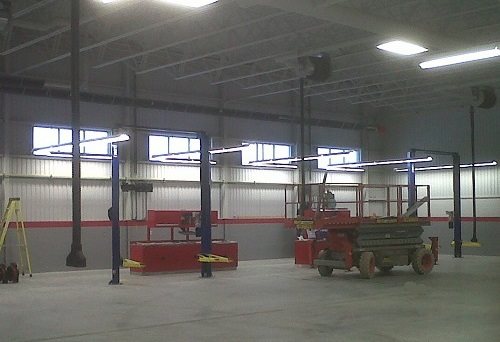
Resources/ Sensor Placement
Coverage
Guidelines for sensor placement of diffusion type sensors are based on the reasonable delay for gas to get from the source to the sensor. All sensors are created equal in this regard.
- For air quality control of exhaust emissions and accumulations of toxic gases the generally acceptable maximum radius of coverage is 50 feet (15 meters). Approximately 7500 square feet (700 square meters).
- For leak detection of combustible gases, ammonia, refrigeration gases the maximum radius is 30 feet (10 meters) since they can escape more quickly and the risk is greater.
The radius of coverage of any sensor does not extend beyond any obstruction that impedes natural circulation of air. This includes walls, stairs, elevators, shelving with solid fill, tool chests, etc. The sensor must "see" the area of coverage; if not, another sensor(s) is required.
Mounting Heights
Mounting heights for gas sensors are based on their density, relative to air. There are three groups;
- Lighter than air and will be more concentrated near the ceiling;- hydrogen, methane (natural gas), ammonia, helium. Install at 1 to 3 feet from ceiling.
- Similar density to air and will be diluted in air equally at all levels; - carbon monoxide, nitrogen dioxide, hydrogen sulfide, oxygen, carbon dioxide. For vehicle emissions; carbon monoxide monitors or carbon monoxide monitors combined with nitrogen dioxide monitors are installed at 3 to 5 feet (1 to 2 meters) from the floor where the ceiling is 7 to 10 feet high. If the ceiling height is higher than 10 feet, example; for heavy equipment, the carbon monoxide monitors are installed at 3 to 5 feet (1 to 1.5 meters) from the floor as per the requirements of the building code regulations and the nitrogen dioxide monitors should be installed at 50% of the ceiling height and above the vehicle height to be in the open circulation of the air. If the exhaust pipes of diesel vehicles are below the vehicles, then the nitrogen dioxide monitors should be installed at 3 to 5 feet (1 to 1.5 meters) from the floor. Other gases in this group are typically installed at 3 to 5 feet (1 to 1.5 meters) from floor but can be installed up to 50% of the ceiling height. In all cases the monitors must be installed above obstructions blocking circulation of air in front of the monitors, for example; maintenance areas in automobile dealerships where tool chests, work tables and storage racks typically line all walls require the installation of sensors at 6 to 10 feet (2 to 6 meters) off floor to be in the free flow air circulation.
- Heavier than air and will concentrate near the floor; - HFCs, HCFCs, propane, butane, chlorine, most organic vapors (consult Opera). Install sensors at 1-3 feet from floor.
For all types of sensors avoid drafts, obstacles, aerosols, silicones. Place sensors in the center of its coverage area as much as possible.
